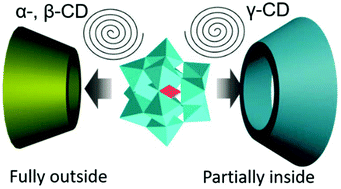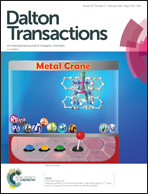Induced chirality and reversal of phosphomolybdate cluster via modulating its interaction with cyclodextrins†
Abstract
The distinctive chirality change of a polyoxometalate cluster PMo12O403−, induced by cyclodextrins (CDs), was investigated in concentrated aqueous solutions. The host–guest interactions between the used inorganic cluster and the organic CD molecules were then identified to maintain the induced chirality. The supramolecular inclusion at the primary hydroxyl side of CDs was demonstrated to be critical in modulating the formed chirality, while the induced chirality reversal was realized by simply substituting a CD with a supramolecule with larger opening or adding a competitive guest.



 Please wait while we load your content...
Please wait while we load your content...